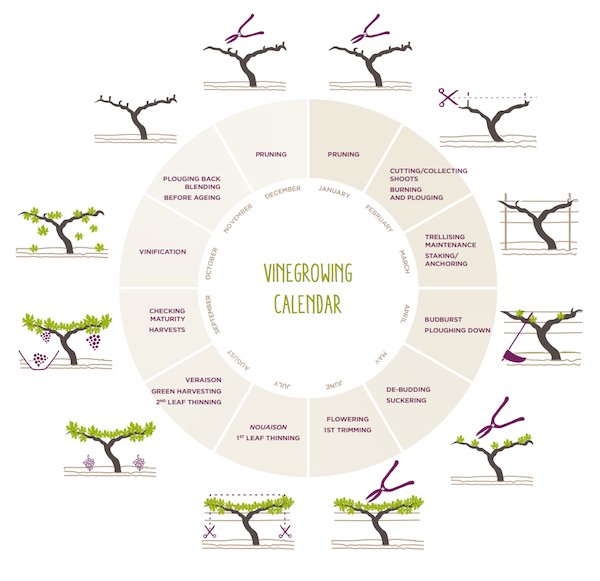It may seem impossible to believe but just one single species of vine is responsible for virtually all the wines that we consume. The common grapevine or Vitis Vinifera has been cultivated over thousand of years and is now responsible for over 10,000 grape varieties. These cover over 8 million hectares of land roughly the same amount of land as the whole of Ireland. Although there are thousand of varieties, many are indigenous to specific countries or regions, with only a handful being commercially popular around the world. Every variety has its own nature and character, but the place where it is nurtured also plays a role in its personality. For example, a Cabernet Sauvignon from Bordeaux region of France and a Cabernet Sauvignon from Australia may differ in style but still have trademark Cabernet characteristics.
The word terroir coined in France refers to a vine specific growing environment. This term embodies where a vine is grown from the climate of the soil but other aspects that affect the style and quality of a wine can also come under the definition of terroir.
The impact of climate and soil in Champagne could be understood by such a way that both the soil and subsoil (the components inside the soil) is made of chalk. During the winter, Champagne region of France receives a lot of rainfall and the chalk starts to store the water. This allows the grapes whether it is Pinot Noir, Chardonnay or Meunier ( 3 major grape varieties used in Champagne), the chalkiness is going to be captured into the juice of the varietals.
In Traditional wine producing countries such as France, appellation laws dictate many aspects of production including which varieties can be grown. However, a newer wine growing country like Australia or New Zealand, wine producers are less restricted.
Vine Growing
Bad Burst
Coming to the Pruning or Dormant Pruning process where the wine starts its annual growth cycle with bud burst (bursting of buds and arrival of spring leaves) in the spring. This can be a risky time as frost can destroy the new buds and ruin an entire crop. If the vines successfully negotiate this first hurdle, the buds grow shoots covered with leaves and clusters of flowers which becomes tiny bunches of grapes. During the summer and into autumn these bunches grow and ripen before finally being harvested and the grapes are sent off for wine making resetting the growing cycle.
Flowering
This is followed by Flowering. Some of the vineyards use giant wind machines to circulate the air and keep cold air from damaging the wine. Other vineyards protect new growth by using water sprinklers to coat the vines with water. It may sound self-intuitive but when the water freezes on the wine at zero degree celsius temperature, it actually protects the wine from freezing due to comparatively higher temperature inside the frozen water coating than the outer temperature which is in negative value.
Fruit Set
Most grapevines self-pollinate after which fruit set occurs. This is when you will see small, green clusters of grapes on the vines. Fruit set usually begins at May if the weather cooperates. Around this time, the vineyard crew starts Canopy Management, to control the amount of sunlight and the air that the fruit clusters receive. During this process, workers inspect the clusters and cut away those that aren't growing properly. This practice actually helps the vines save the energy for the best clusters and thus, contributing to quality of the grape.
Veraison
It is that magical moment when those hard and green grapes transform into plump, juicy clusters. In red grapes, the fruit turns from green to purple in colour while in white grapes, like Sauvignon Blanc and Chardonnay, the clusters turn from bright green to more mellow golden green. It is an indication that the fruit is ripening and developing sugars.
Harvest
A series of warm days can speed up the harvesting as ripening happens faster in hot climate. On the other hand, cooler temperatures can delay the harvest. But, ultimately it's the flavor profile that determines the picking of grapes. White grapes are harvested earlier than the Red Grapes and the grapes for Champagne or other sparkling wines are harvested earliest of all because of the desired higher acidity and lower sugar content in those grapes.
#wineblog #wines #vinegrowth #journeyofwine #terroir #Champagne #budburst #Flowering #Fruitset #Veraison #Harvest
#wineblog #wines #vinegrowth #journeyofwine #terroir #Champagne #budburst #Flowering #Fruitset #Veraison #Harvest
No comments:
Post a Comment